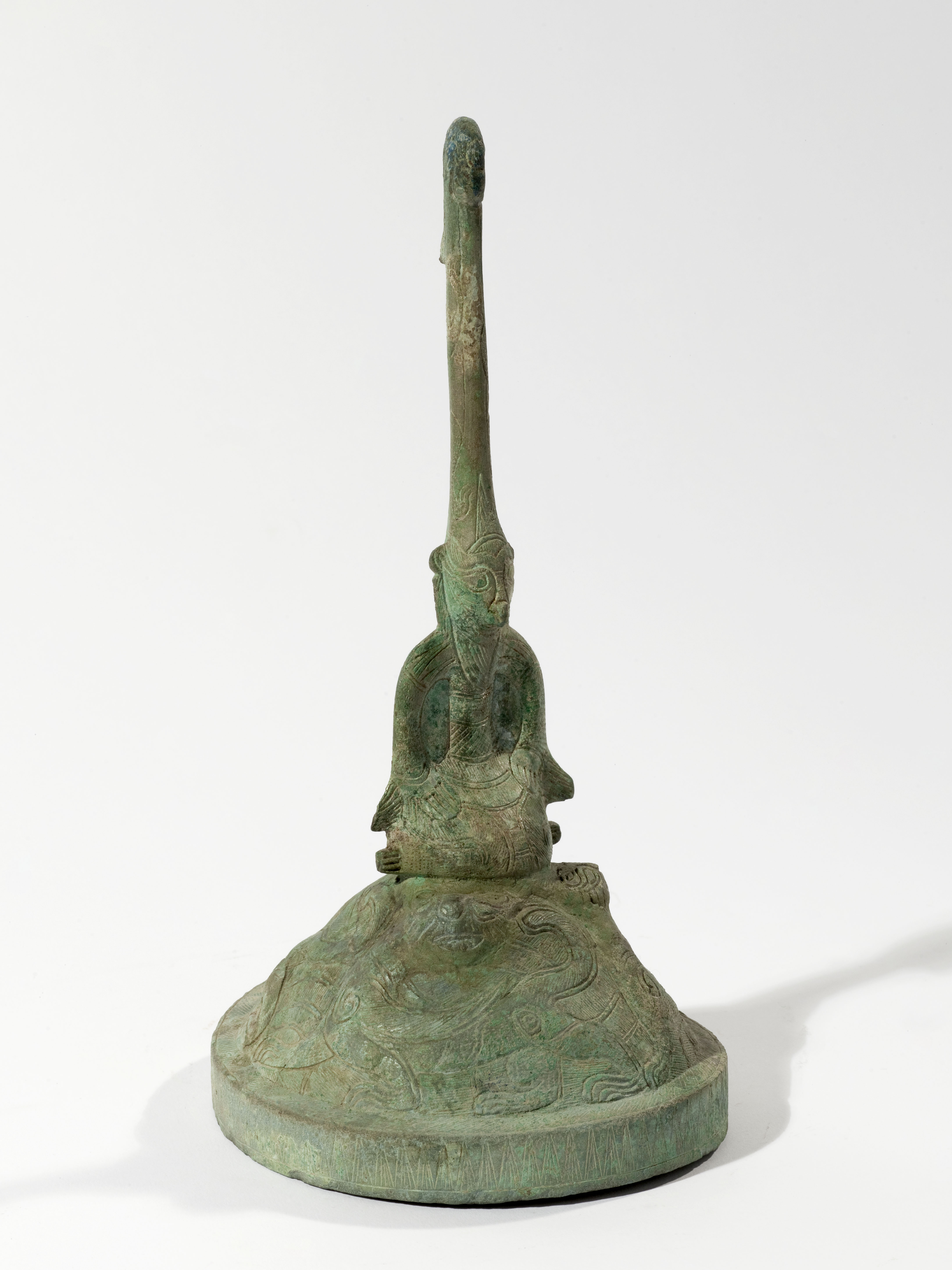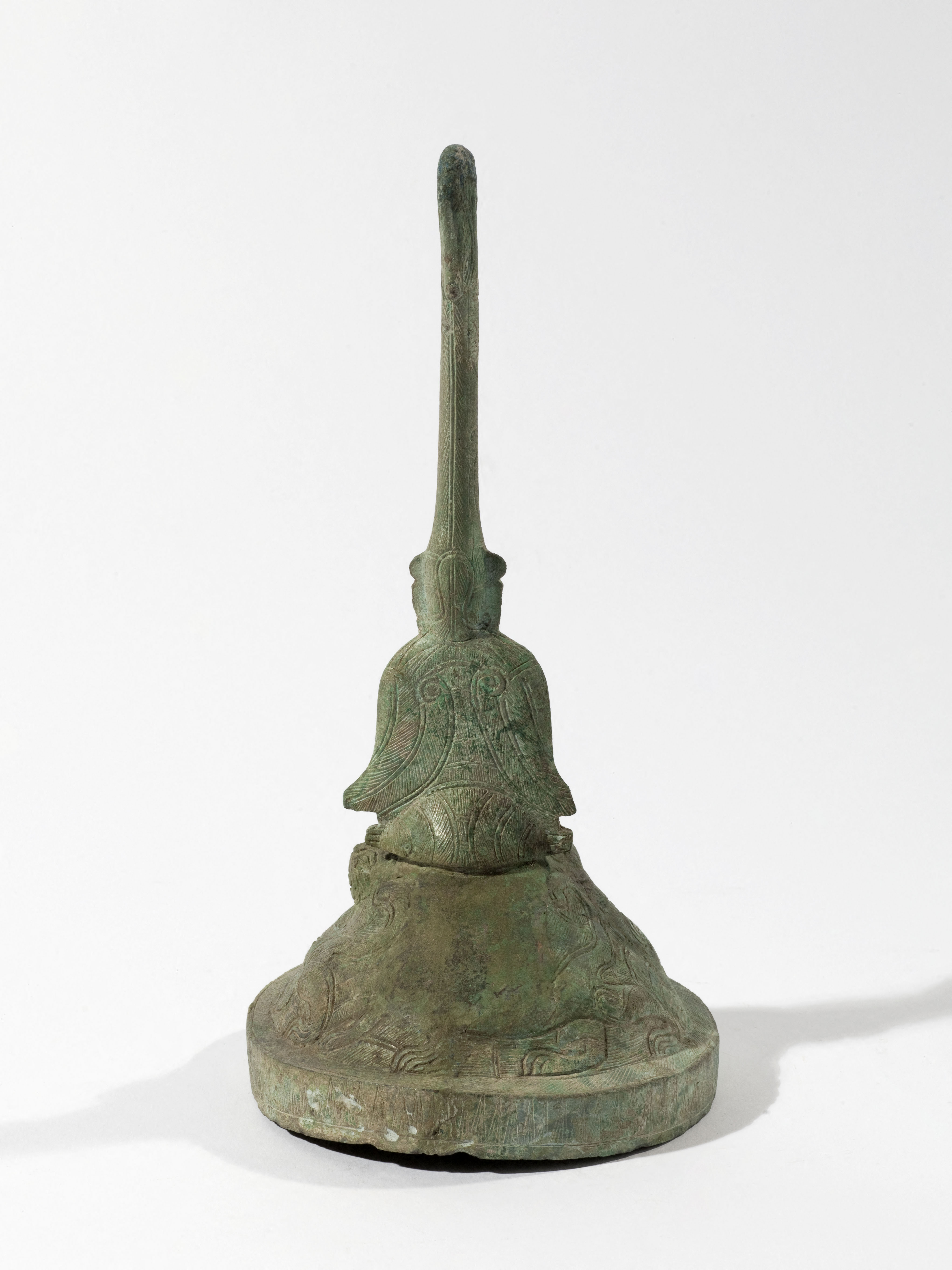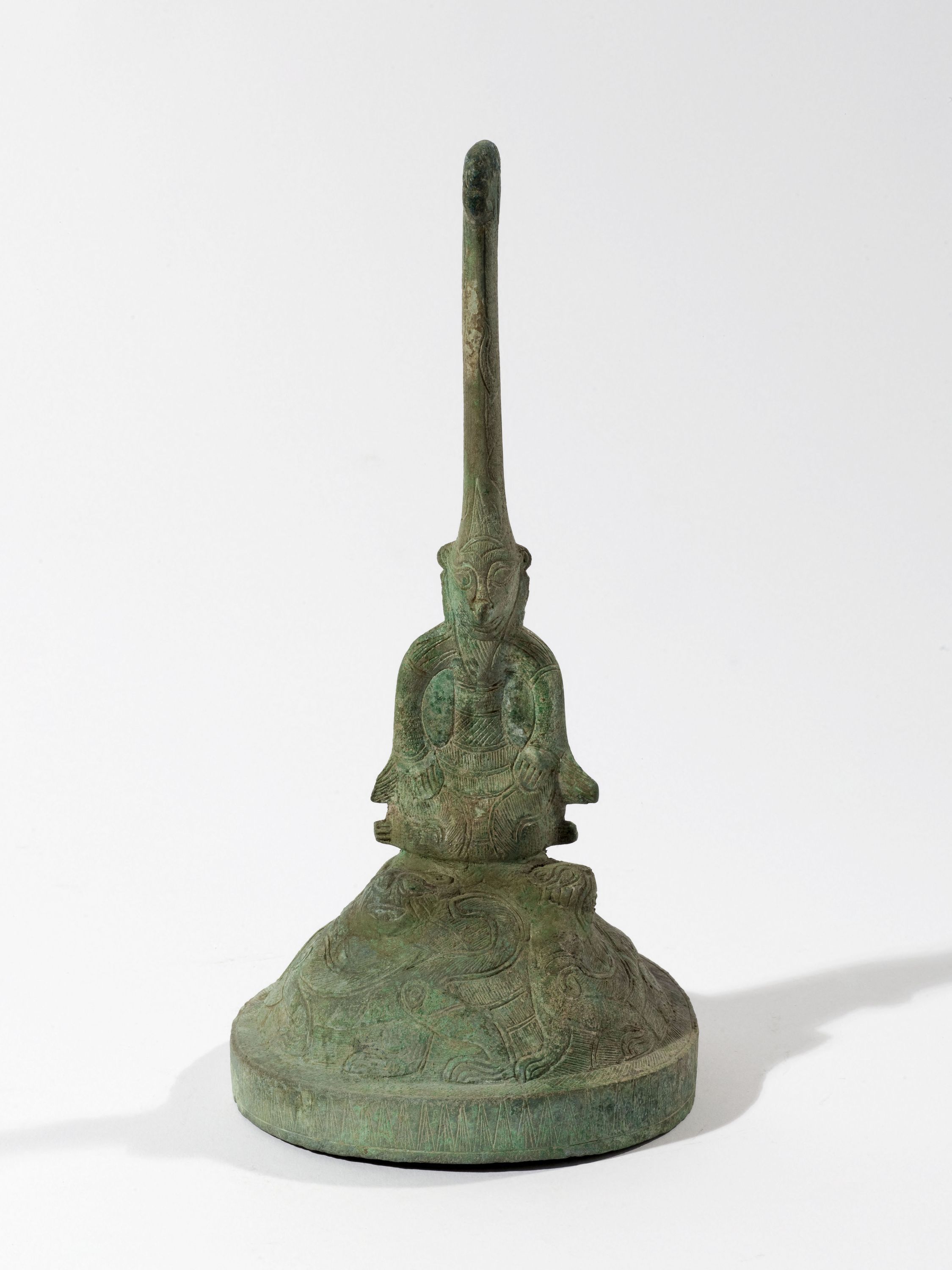
Base de lampe funéraire
Bronze, Fonte
Lampe, Objet funéraire
Achat
M.C. 9905
Under the Han dynasty, treatises such as the Liexian Zhuan (Biographies of the Immortals) compiled by Liu Xiang in the late 1st century BC attest to the belief in countless immortal beings who, having long lived in inaccessible places, manifest themselves under different identities through the centuries. Numerous depictions of them were produced in the Han period. Some decorated the base of oil lamps for tombs. They were referred to by the term xian (immortal) or yuren (bird-man). The Immortal depicted here belongs to this last category and features most of the iconographical elements. The figure is winged, and has an emaciated face with prominent cheekbones, an aquiline nose and pointed chin, very long ears and large arching eyebrows. Square pupils are another attribute of these mythical beings, among other fantastical physical features.
The Immortal is set on a base adorned with winged chimeras. The tightly aligned triangles on the lower band suggest that this lamp base was made in southern China.
Gilles Béguin, Arts de l'Asie au musée Cernuschi, Paris, Paris-Musées/Findakly, 2000, p.83.
Jessica Rawson (ed.), Mysteries of Ancient China, Londres, The Trustees of the British Museum, 1996, p.176, n°86.
Susan N. Erickson "Money Trees of Eastern han Dynasty", The Museum of Far Eastern Antiquities Bulletin, 1994, n°66, p.62, fig.16.
Guanggxi Zhuangzu zizhiqu wenwu gongzuodui, Hepu xian bowuguan, "Guangxi Hepu xian Jizhiling Dong Han mu" (Des tombes Han de l'Est à Jiuzhiling dans le district de Hepu, Guangxi), Kaogu, 2003, n°10, p.57-77, pl.couleurs , fig 1.
Art chinois, Musée Cernuschi, acquisitions 1993-2004, Paris- Musées/Editions Findakly, 2005, p.59.

